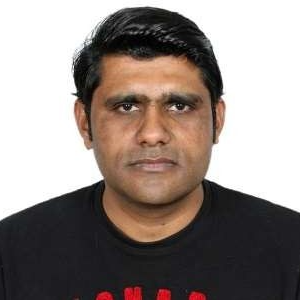Title : The art and science of Metal-Organic Frameworks (MOFs): A journey from conventional to contemporary techniques
Abstract:
Metal-Organic Frameworks (MOFs) have been captivated research for over three decades due to their unique structure and diverse applications. These fascinating materials boast remarkable porosity and well-defined morphological characteristics precisely controlled through a different synthesis methods. From traditional techniques (mechano- chemical/electro-chemical) to more advanced approaches (micro-wave/green synthesis), researchers can tailor MOF properties for specific needs. In this review study, we exploring the diverse synthesis routes, characteristics, and promising applications of these MOFs. We examined the evolution of MOF synthesis methods, highlighting both traditional and advanced techniques. The characterization techniques employed are also explored, encompassing established tools and innovative approaches that provide a comprehensive understanding of MOF structure, like morphology, pore size and crystallinity etc. However, advanced tools like nuclear magnetic resonance spectroscopy (NMR) and BET analysis offer insights into the atomic-level details and surface area characteristics of these materials. This focus on synthesis and characterization allows us to delve deeper into the potential of MOFs for environmental applications, particularly water and air purification. By analyzing real- world examples from the literature, we showcased the effectiveness of both traditional and advanced MOFs in tackling these critical challenges. Despite significant progress, challenges still remain in MOF research. Unveiling the intricate details of MOF structure at the molecular level requires the development of more advanced tools and models. Additionally, time-efficient and scalable synthesis methods are crucial for realizing the full potential of MOFs in environmental applications.
Audience Take Away Notes:
- Versatile Materials for Environmental Cleanup: MOFs are highly customizable materials with unique structures and pores. This allows scientists to "design" MOFs with specific properties for environmental applications, particularly water and air purification. The review explores how different synthesis methods (traditional and advanced) can be used to tailor MOFs for these cleanup tasks
- Understanding MOF Structure is Crucial: The effectiveness of MOFs depends heavily on their intricate structure. The review discusses various characterization techniques, both traditional and advanced, that scientists use to understand MOF structure, morphology, and surface area in detail. This understanding is vital for further development and optimization of MOFs
- Challenges and Future Potential: Despite significant progress, challenges remain in MOF research. The review highlights the need for more advanced tools and models to fully understand MOFs at the molecular level. Additionally, developing faster and more scalable synthesis methods is crucial to unlock the full potential of MOFs for practical environmental applications


